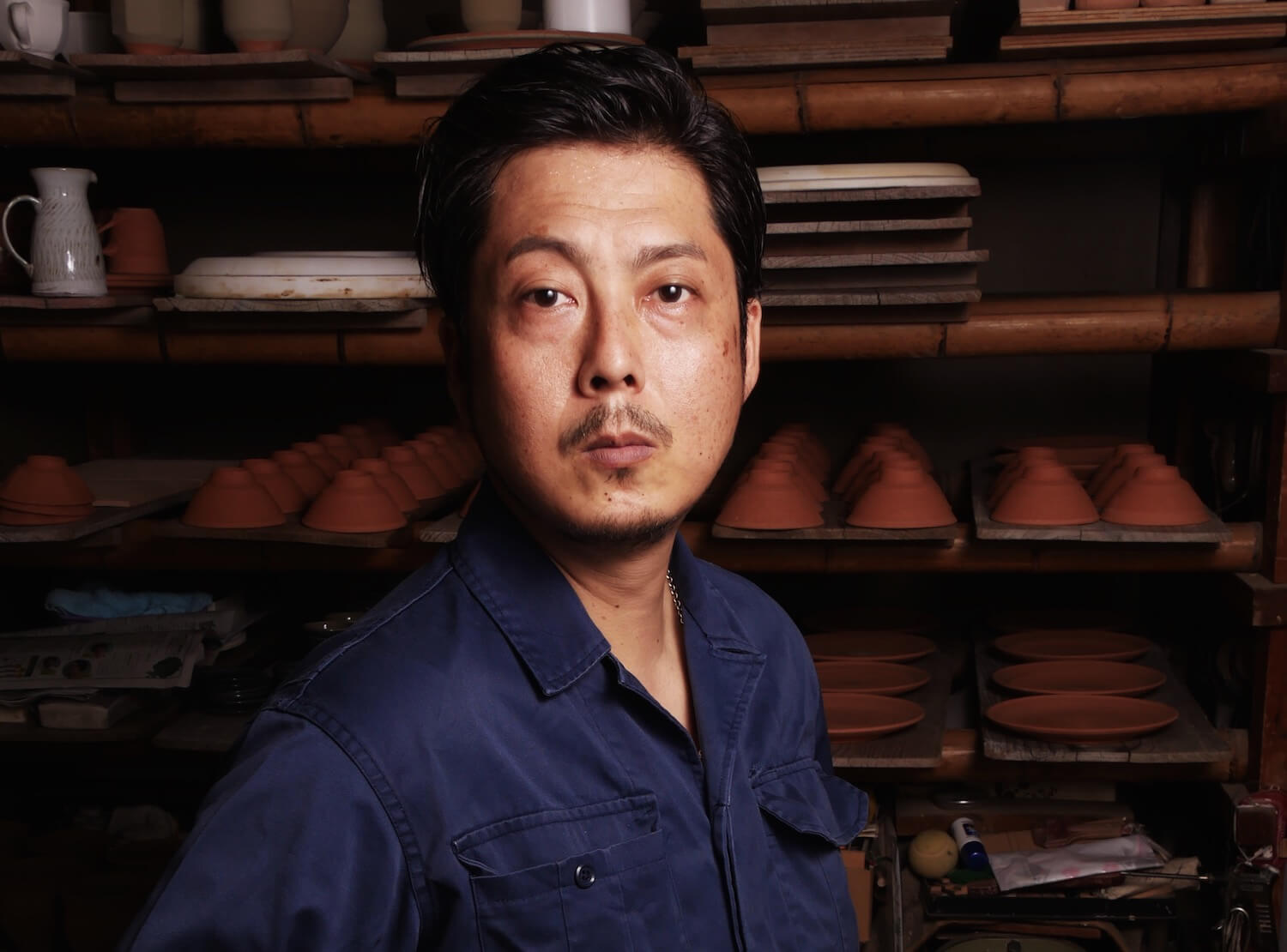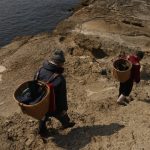
Yunotsu potter, Hiroyuki Arao
温泉津の陶芸作家、荒尾浩之さん
Yunotsu currently has three kilns close to each other. There are also two large climbing kilns, or noborigama. One of them is still active. Twice a year, this noborigama is used to bake special pottery. For noborigama, pine trees are used as pine rosin creates a high heat in the kiln.
A local potter, Hiroyuki Arao, has been making pottery since 1996 when he began learning the craft at a specialised school in Kyoto. After graduating from school, he became an apprentice under his father, Koichi Arao. According to Hiroyuki, you can never expect the same result from noborigama because natural conditions directly affect the outcome. The colour of pottery occasionally changes when fired and it sometimes takes on a metallic appearance due to the chemical reactions. This change of colour is called yohen.
“I want to take my time and create things slowly. My master tells me to strive hard and grow steadily, ” says Arao.
At HÏSOM, you can use Arao’s cups and plates and experience his craftsmanship.
現在、温泉津には、さほど離れていない場所に3つの窯元がある。そして近くには2つの大きな登り窯もあり、1つは現役だ。年2回、登り窯に火が焚かれ、特別な陶器が焼かれる。登り窯では松の薪が使われる。松脂には釜の温度を高温にする効果がある。
荒尾浩之さんは、地元の陶芸家の一人。1996年に京都の専門学校に進学し、陶芸を始めた。卒業後、父親の荒尾浩一さんのもとで修行。浩之さんによると、登り窯で焼いたものは2つと同じ結果にならないという。自然の条件が結果に左右するからだ。火入れすると、陶器の釉薬の色が化学反応により金属のような見た目になることがある。窯変と呼ばれる現象だ。
「時間をかけて、ゆっくり作品をつくりたい。努力して、少しずつ成長しなさいというのが師匠の教えです」と浩之さん。
HÏSOMのゲストハウスでは、浩之さんの椿釜で焼かれたカップやお皿をお使いいただけます。
Text by Maki Nakata
Photography by Edward Hames
